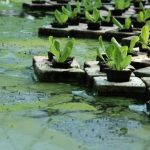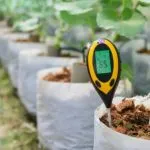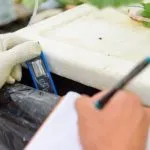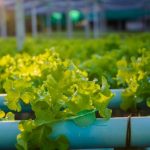Hydroponics, the method of cultivating plants without soil and primarily in water, has its own set of unique parameters to monitor for success. One key component that’s often on a hydroponic gardener’s radar is EC or Electrical Conductivity. But what is EC in hydroponics? This blog post will dive into the concept.
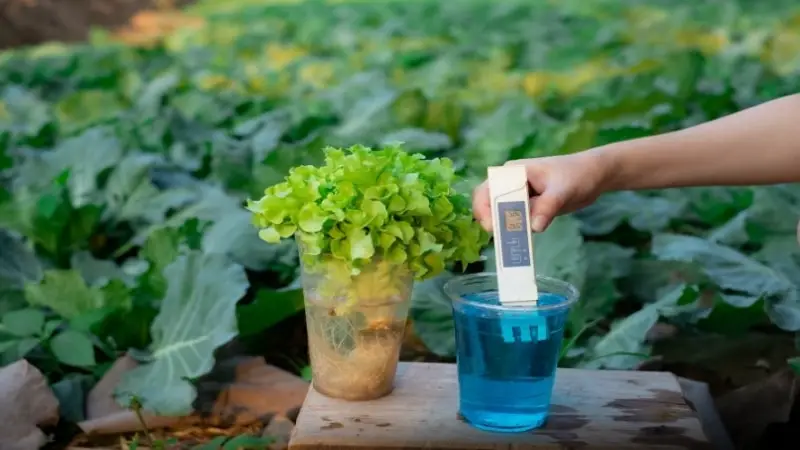
EC is a measure of the concentration of nutrients in your hydroponic system. It indicates how easily electricity can pass through the nutrient solution, and it is measured in millisiemens per centimeter (mS/cm). EC is a vital measurement tool that provides significant insights about your hydroponic system’s health, playing an essential role in ensuring optimal plant growth. By understanding hydroponic EC levels, you can ensure that your plants receive the optimal amount of nutrients for healthy growth.
Understanding EC in Hydroponics
Electrical Conductivity (EC)
In hydroponics, understanding the quality of your nutrient solution is crucial. One key factor to pay attention to is Electrical Conductivity (EC). EC is a measure of how easily electricity can pass through your nutrient solution, which tells you the number of available nutrients in your hydroponic system. The higher the EC, the greater the number of nutrients, as plant nutrients are available as soluble ionic compounds that conduct electricity. You can measure EC using an EC meter.
Conductivity Factor (CF)
Conductivity Factor (CF) is another term used to describe the electrical conductivity of your nutrient solution. CF is also measured in millisiemens per centimeter (mS/cm). The units might be different, but the idea remains the same: CF is an indication of the concentration of nutrients in your hydroponic solution.
Total Dissolved Solids (TDS) and Parts Per Million (PPM)
Another important measure for your nutrient solution is Total Dissolved Solids (TDS) or Parts Per Million (PPM). TDS (also known as total dissolved salts) measures how many salts are contained in the water. TDS is expressed in PPM, which denotes how many dissolved solids are in the solution per million parts of water.
While TDS and EC are related, they are not the same. EC measures how well your solution conducts electricity, while TDS measures the actual number of dissolved solids. This difference becomes important when you need to fine-tune your nutrient levels.
Conversion Factor
To better understand the relationship between EC, CF, TDS, and PPM, you’ll need to use a conversion factor. Conversion factors vary based on the type of salts in your solution and the nutrient composition. For hydroponic nutrient solutions, a typical conversion factor can range from 0.5 to 0.9. To estimate TDS in PPM, you can multiply the EC value in µS/cm (microsiemens per centimeter) by the appropriate conversion factor.
With a clear understanding of EC, CF, TDS, and PPM, you’ll be better equipped to monitor and manage your hydroponic nutrient solution, ensuring your plants receive the right balance of nutrients for optimal growth.
Importance of EC in Hydroponics
In hydroponics, EC (electrical conductivity) is an essential aspect, as it measures the water’s conductance and tells you the number of available nutrients in your hydroponic system. Monitoring and managing EC levels in your hydroponic system plays a critical role in the overall growth, health, and yield of your plants.
With proper EC measurement, you can monitor if the nutrient solution in your hydroponic system is too concentrated or too diluted. This information helps you determine whether to add more water or nutrients, allowing you to create an ideal environment for plant growth.
In addition, EC levels in hydroponics greatly influence the osmotic pressure in the roots, which affects nutrient absorption. If the EC level is too high, your plants could struggle to absorb nutrients due to increased osmotic pressure. On the other hand, if the EC level is too low, it can negatively impact your plants’ yield, since fewer nutrients are available for absorption.
How To Measure EC In Hydroponics
To measure and maintain suitable EC levels in your hydroponic system, you can use an EC meter, which is specifically designed for this purpose. Alternatively, you can use a conductivity meter, which may not be as accurate but can still give you a good idea of the dissolved solids content in your nutrient solution.
EC Meters
An EC meter is a tool used to measure the electrical conductivity in your hydroponic nutrient solution. This helps you determine the number of available nutrients in your hydroponic system. These meters come in different types, including handheld, benchtop, and continuous monitoring systems. Some EC meters can also measure TDS (total dissolved solids), pH levels, and temperature of the water, making them versatile instruments for maintaining optimal growing conditions. Ready to but an EC meter now? First, read our guide on the best hydroponics EC/PPM meter options available.
Calibration
Before measuring EC in hydroponics, proper calibration is essential for getting accurate readings from your meter. You’ll need to follow the manufacturer’s instructions to calibrate the meter using a conductivity standard solution, typically with specific 1413 µS/cm, 2764 µS/cm, or 12,880 µS/cm levels. Ensure that your calibration solution is fresh and at the appropriate temperature to avoid errors.
- Rinse the electrode of the EC meter with distilled water.
- Dip the electrode into the calibration solution, ensuring it is fully submerged.
- Turn on the EC meter and wait for a stable reading.
- Adjust the calibration dial or use the calibration function on your meter to match the EC value of the calibration solution.
- Rinse the electrode with distilled water again before using it in your hydroponic system.
Keep in mind that calibration should be performed regularly, preferably before each use, to maintain your EC meter’s accuracy.
How To Use an EC Meter in Hydroponics
Once your EC meter is calibrated, measuring the electrical conductivity in your hydroponic system is straightforward:
- Fill a clean container with a sample of your nutrient solution.
- Immerse the electrode of the EC meter into the solution, ensuring it is submerged to the proper depth according to the manufacturer’s instructions.
- Turn on the EC meter and wait for the reading to stabilize.
- Note the EC value displayed on the meter, indicating the nutrient concentration in your hydroponic system.
- Compare the reading with the recommended EC range for the specific plants you’re growing to determine if nutrient adjustments are necessary.
Factors Affecting EC
When it comes to EC in hydroponics, several factors can influence the electrical conductivity of your nutrient solution. Understanding these factors will help you maintain an optimal environment for your plants’ growth and health.
First, consider the temperature of your nutrient solution. As temperature increases, so does the conductivity of the solution. This occurs because higher temperatures cause ions to have more kinetic energy, allowing them to move more freely, thus increasing the conductivity. To maintain consistent EC readings, it’s essential to keep your water nutrient solution temperature stable.
Next, be aware of the pH level in your hydroponic system. pH affects nutrient availability and uptake by your plants. Most nutrients are best absorbed within a specific pH range—usually between 5.5 and 6.5. It’s crucial to regularly monitor and adjust pH levels as necessary to ensure optimal nutrient uptake. You will need an accurate and reliable pH meter for that.
The presence and concentration of ions in the solution also play a significant role in determining EC. Ions are charged particles formed when a compound dissolves in water. They are responsible for conducting electricity in the solution, and their concentration directly correlates to the nutrient strength of the solution. A higher ion concentration translates to a higher EC, while a lower concentration indicates a lower EC. You’ll need to maintain an appropriate nutrient concentration for your specific plants to thrive.
Keep an eye on total dissolved solids (TDS) in your nutrient solution, as this will also impact EC. TDS represents the combined content of all inorganic and organic substances dissolved in the water, including salts, minerals, and organic matter. Higher TDS values can lead to increased EC readings, which may interfere with nutrient uptake and plant growth.
EC Management
What Should The EC Be For Hydroponics?
Ideally, the EC levels in your hydroponic system should be within a range suitable for the specific plants and crops being grown. This ensures that your plants receive the right amount of nutrients needed for optimal growth while avoiding nutrient imbalances or excesses that can harm their health.
Each plant species has different EC requirements, so it’s essential to understand the ideal EC levels for various plants you plan to grow in your hydroponic system. Be sure to consult a reliable reference EC chart for hydroponics or an experienced grower for guidance on determining the best EC levels for your crops.
Stage of Growth
The stage of growth of your plants also plays a significant role in determining the appropriate EC levels for your hydroponic system. As plants progress through their growth cycle, their nutritional needs change, requiring adjustments to the EC levels to maintain optimal nutrient availability.
- Seedlings and cutting stage: During the early stages of plant growth, such as seedlings and cuttings, it is best to keep the EC levels relatively low to avoid overloading your young plants with nutrients. A reduced EC level allows for proper root development and encourages gradual nutrient uptake.
- Vegetative stage: As your plants enter the vegetative stage, their need for nutrients increases, and you can gradually raise the EC levels to accommodate their growing demands. Typically, plants in this stage are developing their foliage and overall structure, so it’s crucial to provide the necessary nutrient concentrations to support sturdy growth.
- Flowering and fruiting stage: When your plants reach the flowering and fruiting stage, their nutrient requirements reach their peak. At this stage, you can maintain higher EC levels to ensure your plants have access to the maximum amount of nutrients needed for abundant flowers and fruit production.
Keep in mind that different hydroponic systems, such as deep water culture, wick system, and ebb and flow, may require slightly different EC management strategies. Be sure to monitor and adjust the EC levels in your hydroponic system regularly for optimum nutrient management and plant health. By paying close attention to your plants’ needs and being proactive in adjusting the electrical conductivity of your nutrient solution, you’ll ensure a thriving and bountiful hydroponic garden.
How To Control EC In Hydroponics
To manage Electrical Conductivity (EC) in your hydroponic system, it’s essential to understand how to adjust the nutrient levels for optimal plant growth. Here are a few tips to help you control EC effectively.
To increase the EC in your hydroponic system, you can add more nutrients to your solution. Be cautious when doing this, as too high of an EC level may lead to nutrient lockout and harm your plants. It’s best to raise EC levels gradually and monitor your plants’ response.
When it comes to reducing EC in hydroponics, you have several options. One method is to dilute your nutrient solution with fresh, clean water. By adding more water, the concentration of nutrients decreases, lowering the overall EC. Remember, drastically decreasing EC levels may lead to nutrient deficiencies, so it’s wise to make changes incrementally. To prevent issues like nutrient lockout or deficiencies, regularly adjusting EC is crucial.
If you suspect overfeeding your plants, lowering the EC can help. Overfeeding may result in negative effects such as root burn or leaf damage, so closely watch for any signs of these issues. Gradually decrease the EC, and be sure to observe how your plants respond to the change.
Related: If the EC level keeps changing even when you try to correct it by adding water or nutrients, it may be time to completely drain and flush the hydroponic water. Find out more here!
Potential Problems with Inaccurate EC
An inaccurate EC in your hydroponic system can lead to a variety of issues for your plants, including wilting, drooping leaves, leaf burn, decreased efficiency, and reduced plant yield. Understanding these potential problems can help you maintain the ideal EC level in your hydroponic system, ensuring optimal growth and overall plant health.
When EC levels are too high, your plants may experience nutrient toxicity, which can cause wilting and drooping leaves. This happens because the excessive nutrient concentration creates an osmotic imbalance, effectively pulling water away from plant roots instead of allowing them to absorb it. This lack of water can result in wilted and drooping leaves, ultimately affecting overall plant health and growth. If you see your hydroponic plants falling over, checking the EC is one of the first things you should do.
Leaf burn can also occur if EC levels are too high, due to over-fertilization. The excessive amount of nutrients being absorbed can cause a “burn” effect on the plant’s leaves, leading to discoloration, curling, and poor overall growth.
On the other end of the spectrum, if EC levels in your hydroponic system are too low, it may result in nutrient deficiencies, limiting the availability of essential nutrients for your plants. This, in turn, can negatively impact plant growth, making it difficult for your plants to achieve optimal efficiency and yield. When nutrient deficiencies occur, your plants may experience slowed growth, discoloration, and other signs of poor health.
Related: Learn more about common hydroponic leaf problems like curling, yellowing, spots, and leaf burn.
Common Hydroponic Plants and Their Preferred EC Levels
When growing plants hydroponically, it’s essential to know their preferred EC (Electrical Conductivity) levels. Here are some common hydroponic plants and their preferred EC levels:
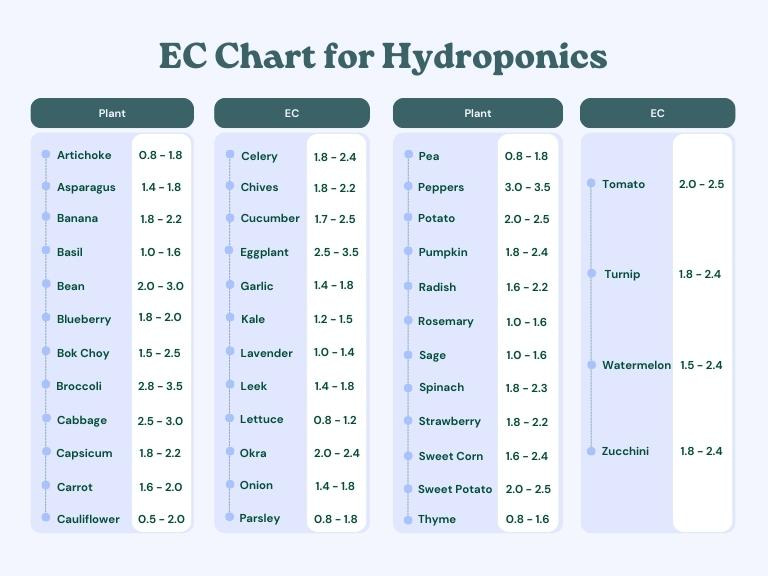
Remember, this chart is a general guideline for hydroponic EC ranges. It’s advisable to consult specific resources for each plant type or experiment with your own system to find the perfect balance.
In addition to monitoring EC levels, it’s essential to keep an eye on the pH of your nutrient solution, as plants are sensitive to pH changes. Different plant species have different pH requirements, but most hydroponic plants thrive in a pH range of 5.5 to 6.5.


